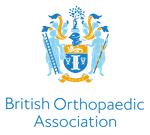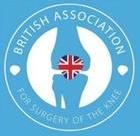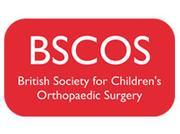BOAST - Assessment and Management of First Time Lateral Patellar Dislocation (FTLPD)



Last updated: December 2024
Published: December 2024
BOASt - Assessment and Management of First Time Lateral Patellar Dislocation (FTLPD)
Background
This guideline provides recommendations for the assessment and initial management of FTLPD, including suspected dislocations,
within any age group.
Standards for Practice
- An acute lateral patellar dislocation should be reduced without delay.
- Aspiration of an associated haemarthrosis should not be performed.
- Following reduction, all patients should have an AP and lateral radiograph of the knee, including skyline patellar view.
- Cast immobilisation should not be used, but splints that permit full knee flexion may be used for pain relief in the period immediately following injury.
- Unrestricted weight bearing should be encouraged immediately, with the aid of crutches if required.
- Patients should be evaluated within 2 weeks of injury in an age-appropriate clinic, by a clinician proficient in the assessment of knee injuries led by a named consultant or specialty doctor.
- Risk factors for recurrent patellar instability should be documented and include; patient demographics, mechanism of injury, previous contralateral dislocation, history of joint hypermobility, and family history of patellar dislocation or joint hypermobility. This should be supported by an appropriate examination, which should include an assessment of global joint laxity and lower limb alignment.
- Assessment by a musculo-skeletal physiotherapist should occur within 3 weeks of injury.
- Unless contraindicated, magnetic resonance imaging reported by a musculoskeletal radiologist should be undertaken if:
- An associated injury is suspected (e.g. osteochondral fracture, ACL rupture, haemarthrosis)
- Alternative injuries cannot be excluded (e.g. locked knee, non-functioning extensor mechanism)
- Patient assessment is difficult
- Any form of surgical intervention is planned
- A patient fails to recover following conservative treatment
- Surgery to treat associated injuries (e.g. fixation of significant osteochondral fractures) may be considered.
- Surgery solely to stabilise the patella should not be offered routinely following isolated FTLPD.
- Isolated lateral retinacular release is never indicated.
- Clinicians considering surgery following FTLPD should discuss their plan within an age-appropriate multi-disciplinary team meeting, or alternative forum for peer review, with written documentation of the outcome included in the medical records.
- Patient initiated follow up is appropriate unless:
- Surgery is undertaken
- A patient fails to recover following conservative treatment
- There is a high risk of recurrent dislocation
- Significant malalignment has been identified in a skeletally immature patient
- Appropriate patient information including leaflets, videos or online / app-based content should be available.
